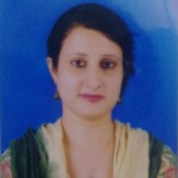
Shikha Bhardwaj
Work place: Department of Electronics & Communication Engineering, DCRUST, Murthal, Sonepat, India
E-mail: shikpank@yahoo.com
Website:
Research Interests: Artificial Intelligence, Computational Learning Theory, Image Compression, Image Manipulation, Image Processing
Biography
Shikha Bhardwaj received her B.Tech degree in ECE from Kurukshetra University, Haryana, India in 2006, Master’s degree in ECE from M.M University, Ambala, Haryana, India in 2009. Now, pursuing Ph.D in Electronics and Communication Engineering Department from DCRUST University, Murthal, Haryana, India. Since 2011, she is currently working as an Assistant Professor in University Institute of Engineering & Technology, Kurukshetra University, Haryana, India. Her major research areas are Image processing, Artificial intelligence, Machine learning etc.
Author Articles
A Genesis of a Meticulous Fusion based Color Descriptor to Analyze the Supremacy between Machine Learning and Deep Learning
By Shikha Bhardwaj Gitanjali Pandove Pawan Kumar Dahiya
DOI: https://doi.org/10.5815/ijisa.2020.02.03, Pub. Date: 8 Apr. 2020
The tremendous advancements in digital technology pertaining to diverse application areas like medical diagnostics, crime detection, defense etc., has led to an exceptional increase in the multimedia image content. This bears an acute requirement of an effectual retrieval system to cope up with the human demands. Therefore, Content-based image retrieval (CBIR) is among the renowned retrieval systems which uses color, texture, shape, edge and other spatial information to extract the basic image features. This paper proposes an efficient and unexcelled hybrid color descriptor which is an amalgamation of color histogram, color moment and color auto-correlogram. In order to determine the predominance between machine learning and deep learning, two machine learning models, Support vector machine (SVM) and Extreme learning machine (ELM) have been tested. Whereas from deep learning category, Cascade forward back propagation neural network (CFBPNN) and Patternnet have been utilized. Finally, from these divergent tested algorithms, CFBPNN attains the highest accuracy and has been selected to enhance the retrieval accuracy of the proposed system. Numerous standard benchmark datasets namely Corel-1K, Corel-5K, Corel-10K, Oxford flower, Coil-100 and Zurich buildings have been tested here and average precision of 97.1%, 90.3%, 87.9%, 98.4%, 98.9% and 82.7% is obtained respectively which is significantly higher than many state-of-the-art related techniques.
[...] Read more.Other Articles
Subscribe to receive issue release notifications and newsletters from MECS Press journals